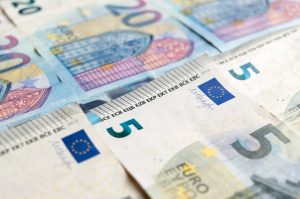The term “gap” in forex trading refers to the discrepancy between the closing price of an asset in one trading session and the opening price of the next trading session. In simpler terms, a gap occurs when the price of an asset jumps from one level to another without any trading activity happening in between. Gaps can occur in both directions, i.e., up or down, and can be caused by various reasons such as economic news, political events, and market sentiment.
Gaps usually occur during periods of high volatility, and are more common in the forex market than in other financial markets. This is because the forex market operates 24 hours a day, five days a week, and is accessible to traders from all over the world. This means that news and events that occur outside of regular market hours can have a significant impact on the opening price of an asset in the next trading session.
Types of gaps
There are three types of gaps that can occur in the forex market:
1. Common gap: This is the most common type of gap and occurs frequently in the forex market. Common gaps are usually caused by market sentiment and occur when the opening price of an asset is higher or lower than the closing price of the previous trading session. Common gaps are usually small and can be filled quickly.
2. Breakaway gap: Breakaway gaps occur when the price of an asset breaks through a significant support or resistance level. Breakaway gaps are usually large and occur during periods of high volatility.
3. Runaway gap: Runaway gaps occur when the price of an asset is moving in a particular direction and suddenly accelerates in that direction. Runaway gaps are usually caused by news or events that trigger a sudden surge in market sentiment.
How to trade gaps
Trading gaps can be profitable, but it is important to understand the risks involved. Gaps can be unpredictable, and there is no guarantee that they will be filled. However, there are a few strategies that traders can use to trade gaps:
1. Gap filling strategy: This strategy involves buying or selling an asset with the expectation that the gap will be filled. This strategy is based on the assumption that the price of an asset will eventually return to its previous level. Traders can use technical analysis tools such as support and resistance levels to identify potential gap-filling opportunities.
2. Momentum strategy: This strategy involves trading in the direction of the gap. Traders can use technical indicators such as moving averages and MACD to identify the trend and enter trades in the direction of the gap.
3. Fade the gap strategy: This strategy involves trading against the gap. Traders can use technical analysis tools such as Fibonacci retracements and chart patterns to identify potential reversal points and enter trades in the opposite direction of the gap.
Conclusion
In conclusion, gaps in forex trading can be profitable but also come with significant risks. Traders should be aware of the different types of gaps and the strategies that can be used to trade them. It is important to have a solid understanding of technical analysis and market sentiment when trading gaps. As with any trading strategy, risk management is crucial, and traders should always use stop-loss orders to limit their losses.





